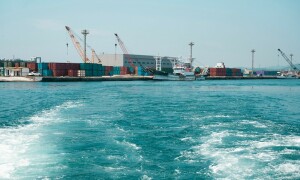Royal Bank of Scotland is to create an internal "bad bank" to fence off its riskiest assets, part of a raft of measures designed to heal its relationship with the British government and speed up its eventual privatisation. Britain is keen to offload its stakes in RBS and state-backed rival Lloyds Banking Group as soon as possible, having pumped a combined 66 billion pounds ($106 billion) into the banks to keep them afloat in the 2008 financial crisis.
"I think it does make it easier to sell off the bank and get our money back," Finance Minister George Osborne told the BBC on Friday, adding that a sell-off was unlikely to begin before the next election in 2015. RBS chairman Philip Hampton, who had previously said the bank could be ready for privatisation in 2014, said the timescale for privatisation may have been pushed back. "If it's felt that in order to get the best value you need to have a reliable dividend stream then we're definitely further away from that because of the capital changes and business changes that have taken place," he told reporters.
RBS and the Treasury said they were in advanced talks with the European Commission to free it from a dividend access share - which gives the government rights to an enhanced dividend and makes the bank less attractive to private investors. Britain began selling shares in Lloyds at a profit earlier this year, but a sale of its 81-percent stake in RBS is much further off, with taxpayers still sitting on a paper loss of nearly 14 billion pounds at current prices. Bankers and political sources have told Reuters it could take three to five years to offload the government's stake. "The tests for these changes at RBS are whether they see the taxpayer ultimately get its money back and whether they actually boost business lending and radically transform this bank to put an end to business as usual," said Ed Balls, the opposition Labour Party's finance spokesman.
The government stopped short of ordering a formal break-up of the bank, which had been advocated by former Bank of England Governor Mervyn King, and by Nigel Lawson, a former finance minister and a member of the influential Parliamentary Commission on Banking Standards.
They had argued that it would leave the bank better placed to lend and support the British economy, but opponents said it would be too expensive and complicated.
The government said the restructuring, along with other measures such as the speeding up of plans to sell its US retail bank, Citizens, would enable it focus on lending to British households and businesses. RBS said it would put 38 billion pounds of loans into a new "capital resolution division" next year, which would free up 10-11 billion pounds of capital.
But critics said it was not very different to the bank's existing non-core asset rundown programme, which currently houses 45 billion pounds of problem loans and was expected to still have 20 billion in 2016. About half of the assets to go into the bad bank are currently held in that division. One of RBS's 10 biggest private investors told Reuters the restructuring was a "cosmetic exercise".
"RBS already has an internal bad bank, so it's just a question of moving some assets into it, shuffling loans around the disclosures; nothing really changes," an executive at the shareholding institution said. The bank aims to run down 55-70 percent of the assets over the next two years, and hopes to remove all the assets from its balance sheet within three.
The bank said Britain's financial watchdog has made it clear in recent months it expects banks to hold more capital, making it more important to sell or run down its bad assets. RBS and the government said the plan would draw a line under the past. The government has been accused of meddling too much in the running of the bank, and RBS's new chief executive Ross McEwan told reporters the review had "taken up far too much of management's time".
Osborne ordered a review of the bank's future in June, after months of tension between RBS and the government that culminated in the departure McEwan's predecessor Stephen Hester earlier that month. Hester had resisted moves to speed up the sale of Citizens and further cut RBS's investment bank. McEwan said the restructuring would reset the bank's relationship with the Treasury, Britain's financial regulator and UK Financial Investments (UKFI), which runs the government's stake.
The faster rundown of assets will accelerate and increase losses on the loans and the bank expects to take an extra impairment charge of 4-4.5 billion pounds in the current quarter, it said. Shares in RBS closed down 7.4 percent, while European banking shares were down 0.5 percent.
RBS said it now planned to hold a core capital ratio of about 11 percent by the end of 2015 and 12 percent a year later, which is 3 percentage points above its current position. It now plans a partial IPO of Citizens in 2014 and a full sale by the end of 2016.
BR100
12,702
Increased By
113.8 (0.9%)
BR30
38,258
Increased By
378.2 (1%)
KSE100
118,383
Increased By
1067.8 (0.91%)
KSE30
36,395
Increased By
278.8 (0.77%)






















Comments
Comments are closed.